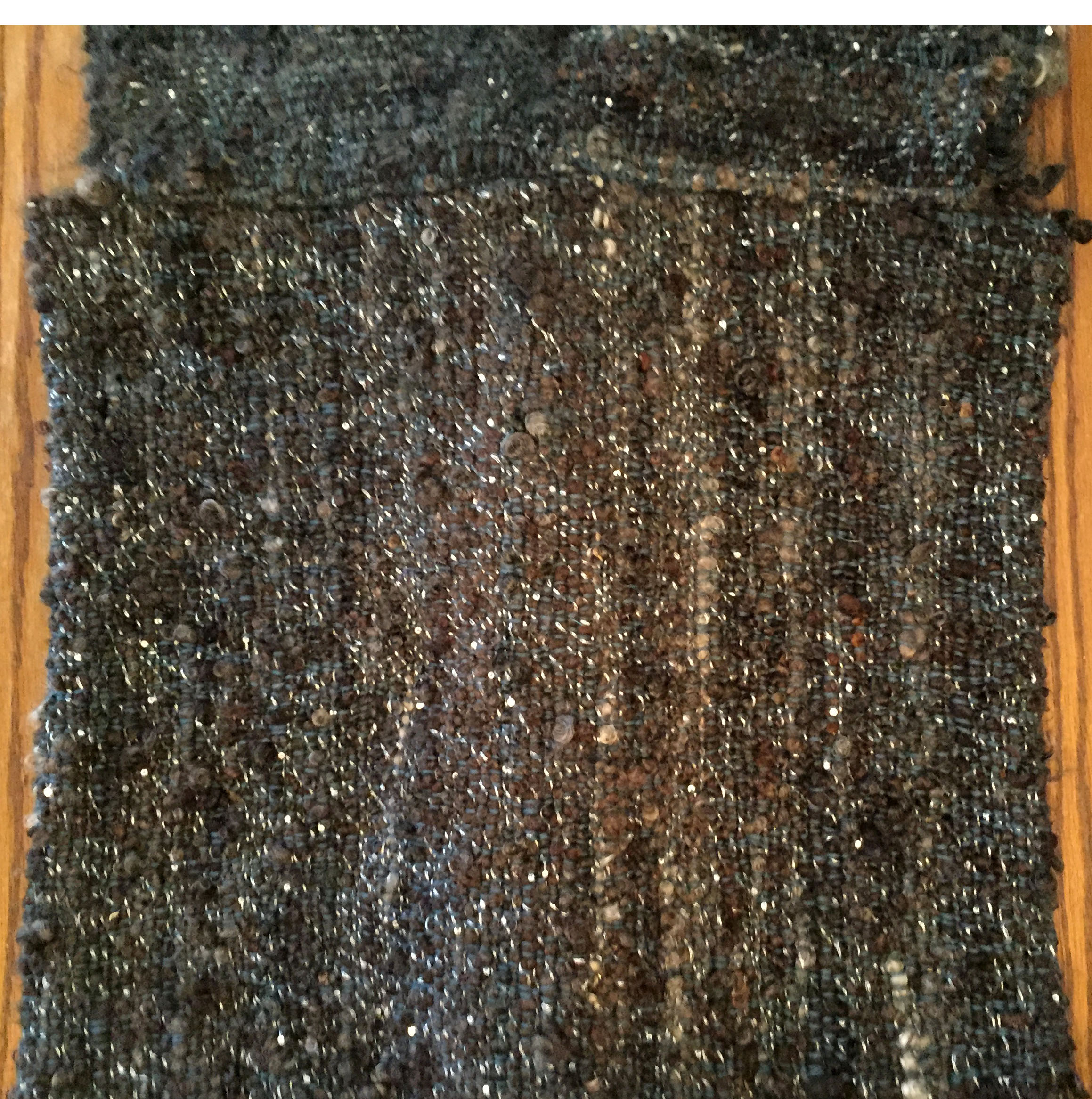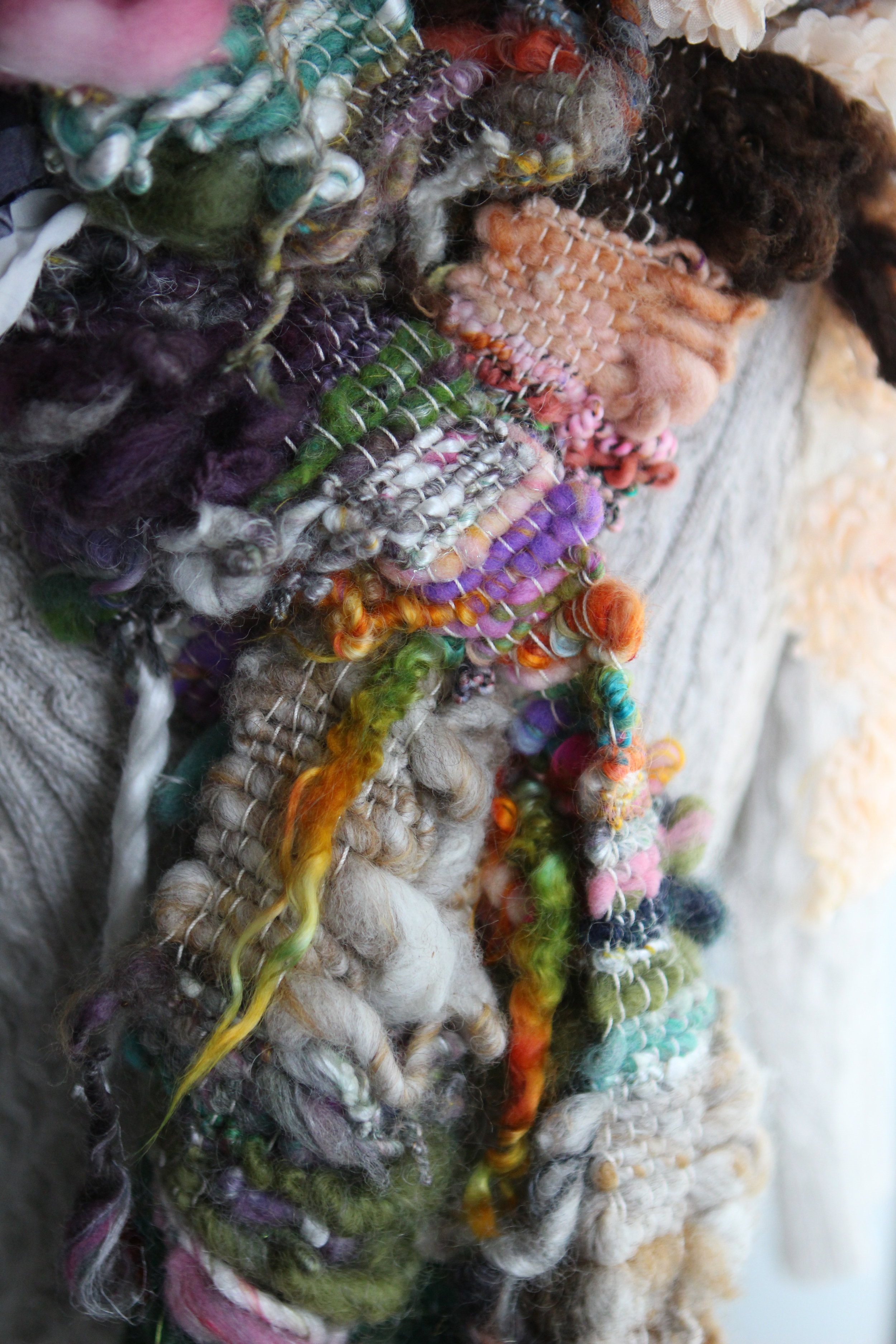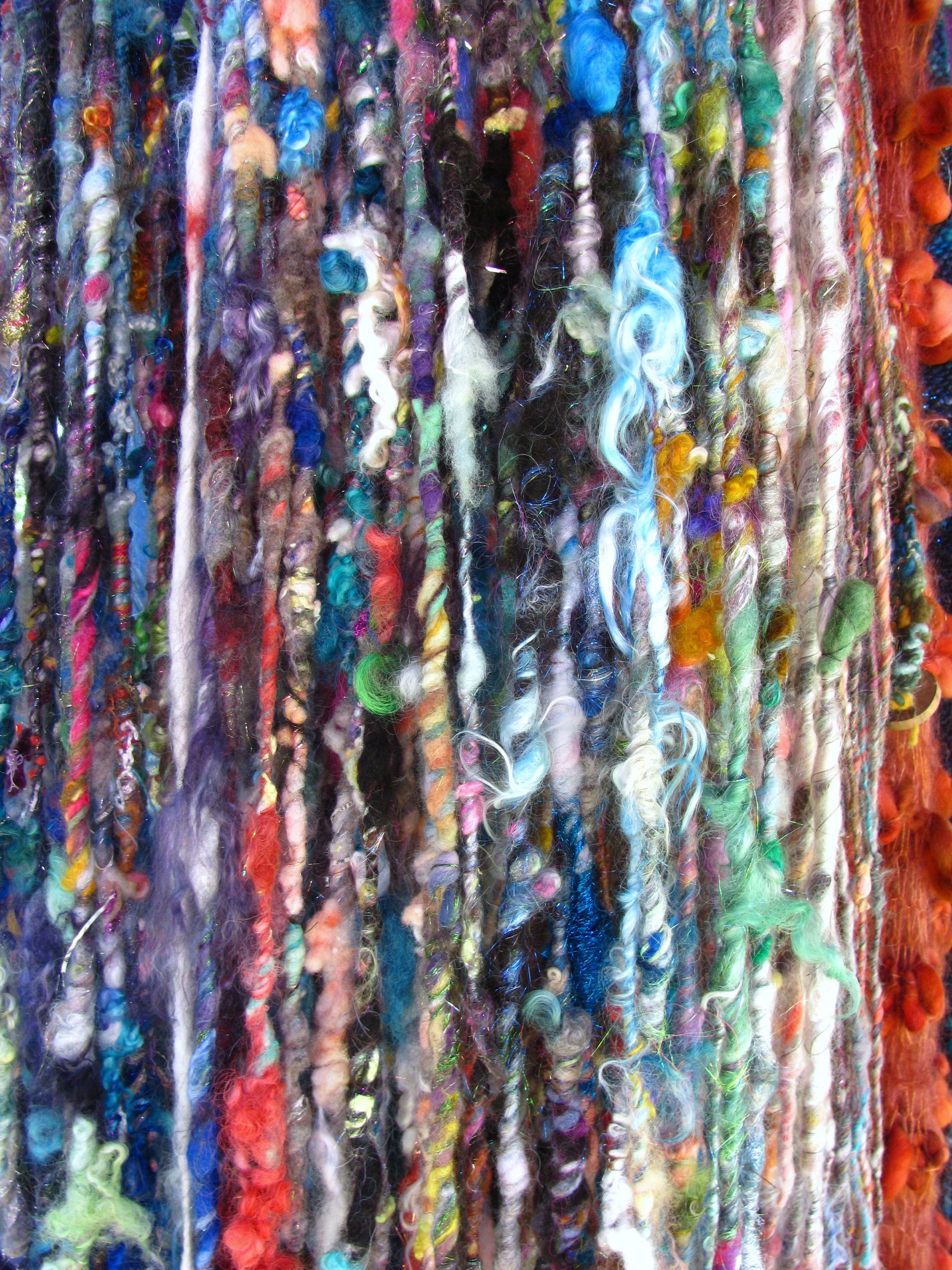Back when Dayna and I were discussing how to display art yarns used in patterns, I made lists and lists of "methods" in a composition book for pattern ideas. I thought some of you intuitive creatives might find this list helpful when you have a beautiful skein of art yarn and you're not sure how it would look best displayed in a scarf.
Lists like this help me think about all my options before casting on. I hope this helps you too in your knit and crochet designs. Below I use the words "knit" and "needles" - but all of these could also be applied to crochet (or weaving weft!)
One Yarn. Just knit the yarn on big needles. Cast on more stitches for a wider scarf, or fewer for a smaller scarf. The size of the scarf will vary depending on the yardage you have. If you are sure you don't have enough yardage, see the other ideas below.
Two Yarns Together. Hold both yarns together and knit. This helps if the original yarn you want to knit is too fine for the needles you want to use. Or if you just want to bulk up the yarn. You'll need enough yardage to complete the project. If you don't have enough yardage, try another method below.
Three Yarns Together. Like the above. Or Four. Or Five. I've taken 6 skeins of lace weight and crochet them into a puff stitch cowl that looks absolutely divine and fluffy. I prefer a bulkier look, but those super super fine yarns all combined together are stunning.
Striped Textures. These always remind me of the Hogwarts scarves, but you can play with this idea. Try different horizontal textures, and different widths. You can also knit a scarf in the round with stripes - making a doubly thick fabric. Stripes are a great way to use up little bits of art yarn that aren't enough yardage for a full project. To keep your gauge the same - combine an extra yarn with finer yarns and use the biggest / bulkiest yarn as your "gauge" to follow.
Handspun + Commercial. I call this "blocking" because it reminds me of adding a pop of color in fashion design. You could knit lengthwise a few rows of commercial, then one long row of a super bulky textured handspun, then a few more rows of commercial. Or knit art yarn and commercial yarn in horizontal stripes.
Dropped Stitches. This is one of my favorites. Try dropping a stitch at the beginning, or middle, or end of a project. Do a yarn over to replace the stitch if you want to drop another stitch later without the scarf losing much gauge. I also love tucking the ends of scarves thru the holes created by dropped stitches. Bulky art yarns, especially tail spun, love being dropped.
Elongated Stitches. You can find a tutorial for this on our site under videos. Wrap the yarn around the needles twice before pulling the stitch thru. This is similar to a double crochet. Wrap the yarn around the needles three times = Triple Crochet. This method creates a drapey, open, stretchy fabric that is easy to wear.
Fringe. Try making a crochet chain or a narrow scarf and then adding art yarn fringe all up and down the scarf, down the middle, or just at the ends. Fringe can transform any project and looks absolutely fantastic with a jacket as a statement piece.
Hooded. Knit or crochet a large hat , then add a scarf to it on either side to wrap around your neck. You can put any two pieces together. A pixie hat + scarf. A boxy hat + scarf. Just pick up stitches on the hat and knit until the scarf is the length you want to create this design.
Add Pockets. Knit a wide scarf using any of the designs above, make it extra long, then fold the ends up and seam the sides to create "pockets" at the ends of your scarf.
Sampler. Use random yarns from your stash to create a mix-and-match scarf that doesn't match anything and makes no sense. I love projects like this, as they tend to "cleanse the color palette" if I'm stuck in a rut, and I always learn something new by throwing caution to the wind like this.
Those were some of my ideas. :) I hope you found them helpful. Looking forward to seeing your own designs! If you'd like to design a pattern for THISyarn please visit our Contributions page to submit your idea. Thank you!







































